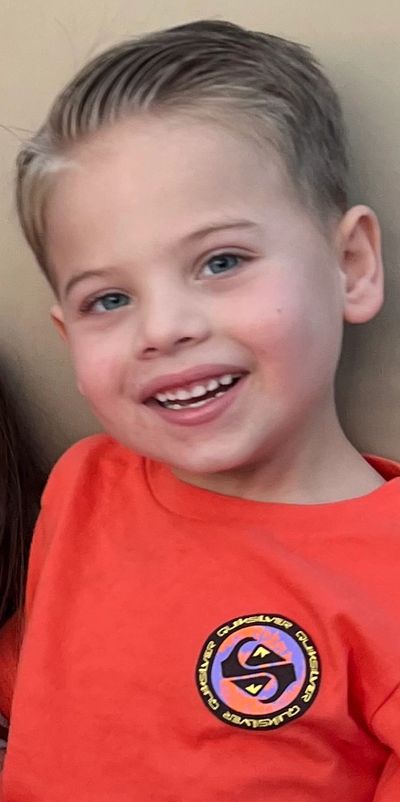Mission
Cure CLCN6 is committed to raising awareness of CLCN6 gene mutations, providing essential rare disease support and advocacy for affected children and their families, and funding the research and development of gene therapy initiatives and ultimately, a cure.
The Story of Cure CLCN6
Cure CLCN6 is committed to raising awareness of CLCN6 gene mutations, providing essential rare disease support and advocacy for affected children and their families, and funding the research and development of gene therapy initiatives and ultimately, a cure.
Meet Paxton

How We Came To Be
When our son Paxton turned one year old, he failed to meet most of his developmental milestones and was referred for Early Intervention Services, as he was suspected of being on the Autism Spectrum. He underwent DNA testing for gene mutations that contribute to autism and intellectual disabilities, but no genes were found to be causing his challenges. When he was five years old, he began having seizures, was diagnosed with epilepsy, and underwent further DNA testing to see if the epilepsy was caused by a gene mutation. Again, no gene was found to be causing his challenges.
Despite many different medications, his seizures persisted every night, and testing was ordered to have his whole exome sequenced. It was during this testing that a mutation was discovered on his CLCN6 gene, which is causing severe epilepsy, autism, severe developmental delay, poor motor coordination, and hypotonia.
The genetic team informed us that mutations on the CLCN6 gene were not discovered until 6-7 years ago and that whole exome sequencing testing is not widely offered to patients. The available literature indicates that this particular gene mutation causes neurodegeneration and that our son may regress. We were told that there is nothing that can be done, and the genetic team would follow up with us in two years.
Overcome with grief and sorrow, we researched as much as we could about CLCN6 gene mutations. Through our research and conversations with people with backgrounds in microbiology, we learned that while nothing can be done today, hope and potential treatments through gene therapy are on the horizon.
In April of 2024, we discovered that scientists at the University of Massachusetts, Worcester, through the Chan Medical School, Horae Gene Therapy Center, work with families and individuals who have rare diseases. These researchers offer hope and potential treatments, and possible cures for families affected by rare diseases that lack significant funding for clinical trials due to a low population in need.
We, along with many families like ours, now have an opportunity to develop gene therapies for our children and loved ones. However, this opportunity comes at a major price.
To develop, test, and administer the gene therapy and clinical trial, we need to raise $1.5 million. While this offers a ray of hope through the clouds of despair, it also creates additional stress and a herculean challenge to gather the funds needed to help Paxton.
We have created this organization to raise awareness of CLCN6 gene mutations and how they severely impact Paxton. We cannot complete this journey on our own, and we ask you to please join us in raising $1.5 million to develop and deliver a life-saving and life-changing gene therapy for our son.
The cell and gene therapy field is still in its infancy, and the potential it holds for individuals with rare diseases and their families is unlimited. The technology to edit DNA or RNA to provide a treatment and even a permanent cure exists and has been successfully carried out on select individuals in clinical settings. But much work is still needed before it is widely available and affordable for everyone. We believe that humanity can come together to provide a cure for mankind's greatest medical challenges. Progress and advancement in one area raises the tides of research in all areas.
OUR IMPACT
Families Discovered
Families around the world are contacting us that their children have also been diagnosed with mutations on the CLCN6 gene.
We have been in contact with 10 other families (as of 12/16/2025).
Countries Served
As the only patient advocacy group for CLCN6 mutations, we serve families all over the world, from seven different countries (as of 12/16/2025).
Variants Identified
From the families that have shared their child's variant, and including our son Paxton's, we have identified seven different variants.
Copyright © 2024 Cure CLCN6 - All Rights Reserved.
Cure CLCN6 Inc., is a registered non-profit agency in the state of California. as a Tax Exempt 501(c)3) organization.
EIN: 33-1628589
Donations to cure clcn6, inc., are tax deductible within the guidelines of the U.S. law.
This website uses cookies.
We use cookies to analyze website traffic and optimize your website experience. By accepting our use of cookies, your data will be aggregated with all other user data.